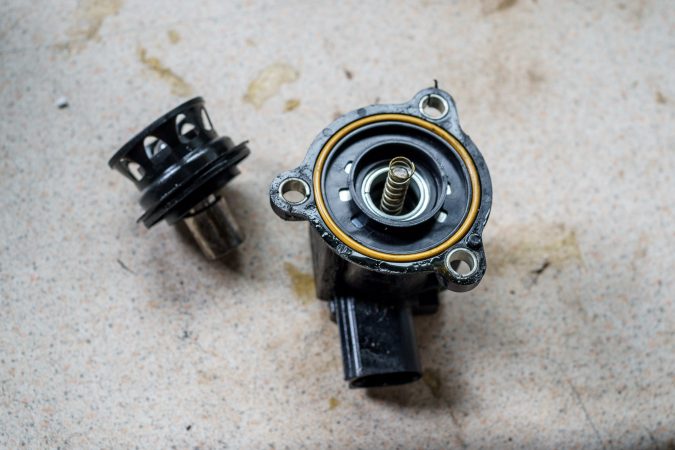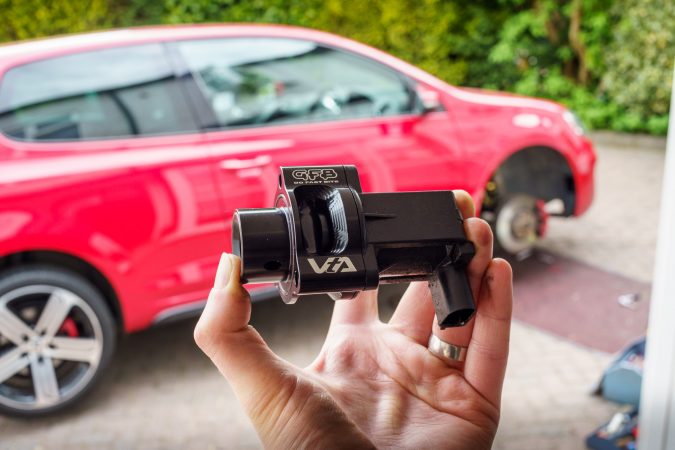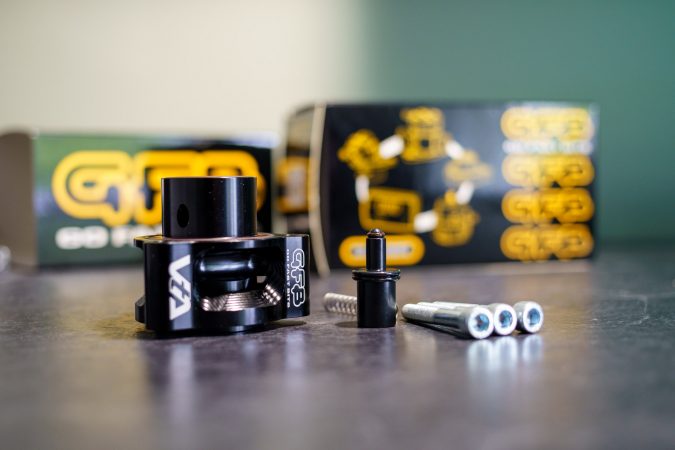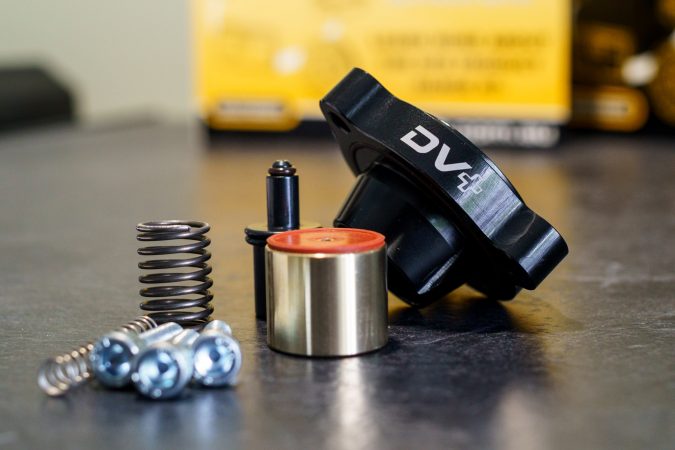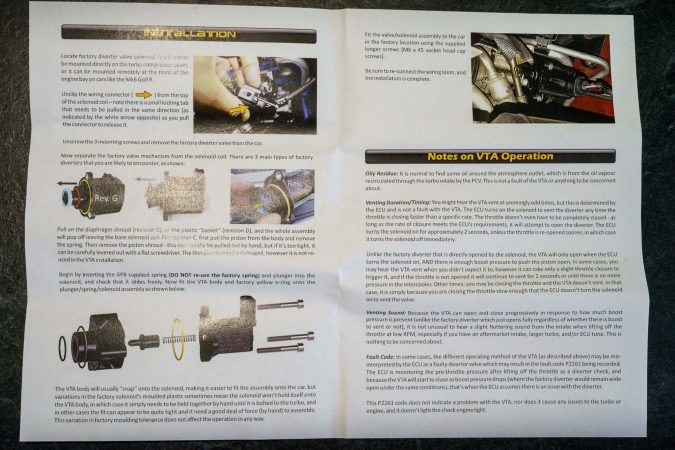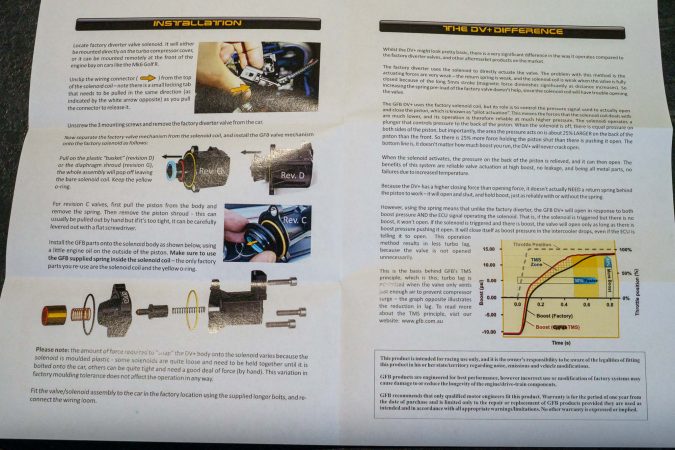Volkswagen Golf GTI Project – Diverter Valve
There’s nothing out there that can quite indicate a turbocharged car like the noises it makes while driving. The intake whistle, deepened exhaust tone, wastegate bellow as it opens and finally, the rush of air as you let off the throttle – the blow off.
That said, even though turbocharged cars are incredibly commonplace nowadays, especially amongst newer cars, it’s rare that you ever get to listen to the turbocharger raw. Manufacturers have largely stifled them since it’s considered rather uncouth and negatively impacts NVH qualities.
Such is the case with our project car, the 2009 MK6 Volkswagen Golf GTI that we bought. So far we’ve done a little bit of work on it, but nothing much so far in the business end. In fact, for a hot hatch made to appeal to the young, we reckon it’s a bit too muted.
Therefore, we contacted Go Fast Bits, a renowned Australian performance parts manufacturer and distributor, asked if we want to showcase their diverter valves for the Golf GTI, it’s only natural that we were rather ecstatic about testing them out.
What is a diverter valve?
Before delving in too deep, it is important to know what is the diverter valve and what role it plays in the whole charged air circuit.
The diverter valve is used rather broadly across many modern turbocharged cars, and its introduction has largely phased out blow-off valves or recirculating valves in OEM turbocharged applications.
Its sole purpose is to relieve the excessive and unnecessary pressure that remains in the charged air circuit due to a sudden and abrupt throttle off event. This helps to preserve turbo lifespan by reducing thrust load on the turbocharger bearings by neutering ‘off-throttle compressor surge’.
That’s certainly a lot of technical jargon, but it really translates to this – it helps your turbo when you let off the throttle after acceleration and building boost. When you are in boost and release the throttle, the throttle valve shuts off almost entirely while you still have all this pressurised air in the system. This air has nowhere to go, but out through your turbocharger which is your intake.
When that happens, it applies opposing forces onto your turbocharger that it might not be built to handle, thus possibly wearing it out quickly over time. There is a big performance implication though, as it also coerces your turbocharger to operate at the surging range – it stalls your compressor.
Since you have a lot of disruptive pressurised air in a system with minimal airflow, it slows down your turbocharger and forces it to operate inefficaciously. The turbo then requires a bit of time to get up and running again, thus reducing immediate throttle response and increasing boost lag.
The diverter valve is there to prevent that, as it provides space for all that pressurised air to escape and flow. You can find this diverter valve right at the compressor housing of the Golf GTI, which is located at the rear of the engine, close to the firewall.
Its construction can be simplified to a solenoid and piston. When the ECU provides the signal to open the diverter valve, the solenoid energises and pulls the piston back, which then allows pressure to escape. Incredibly simple concept, yet it performs it’s duty well.
So then, if it does its job well, why replace it? There are two big incentives as to why you might want to replace the stock diverter valve with an aftermarket option. One, the stock diverter valve uses weaker plastic and rubber parts that are prone to failure due to high operating temperature.
The other motive is to raise the performance ceiling. For those that love unbridled speed and reckons the Golf GTI could go faster, there’ll come a time that you want to increase the boost. The stock diverter valve’s spring is typically too weak to withstand increased system pressure, causing boost leak.
The idea behind the GFB DV+ and VTA
Therefore, Go Fast Bits, or GFB, has innovated, introducing an aftermarket solution that’s made to be installed like an OEM unit, yet provide the performance benefits only aftermarket products could. Cue the T9351 DV+ and VTA, made to incorporate seamlessly into multiple turbocharged cars from European marques.
However, that’s not the impressive part. It is indeed unassuming for an aftermarket performance-centric component. Rather, it’s rather brilliant because while it utilises part of the stock component, it fundamentally alters how the valve functions while improvising on its original purpose.
There are a few big flaws with the factory unit. One, the solenoid operates the valve directly, meaning that it works against a lot of mass and pressure. Second, the return spring can’t be too strong since the solenoid won’t be able to operate the valve, limiting boost levels. Third, the valve has a lethargic opening action due to the distance between the coil and the solenoid.
In GFB’s interpretation, the T9351 DV+ valve merely ‘pilots’ the piston. Meaning that it manipulates the pressure signal to indirectly actuate the piston of the diverter valve. In lieu of a heavy piston, now the coil only has to magnetise a small valve to open and shut the piston.
This, of course, has several advantages, with better high-pressure behaviour due to the lower forces the solenoid has to work against. Another clever thing is that while the pressure on both sides of the pistons are equalised, the pressure on the back acts on an approximately 25% larger area, thus keeping the piston shut under even tremendous boost.
It’s really an overhaul of the factory design, with two return springs rather than just one. One for the piston and one for the valve itself. You might figure that the piston doesn’t need a spring because of the equalized pressure, but having one allows the piston to be ‘smart’ per se.
That is, it won’t open unnecessarily if there’s insufficient boost, even if the onboard computer tells it to open. It also closes the piston immediately as boost recedes in the charged air system. This further improves immediate throttle boost response, recovering boost on off-on throttle states quicker.
Also, it eliminates most of the factory fragile plastic parts and replaces them with machined aluminium bits to improve reliability. Which is a common worry with the factory unit.
Installation – GFB DV+ & VTA
Installation is thankfully straightforward thanks to the documentation provided by GFB themselves.
First, you need to remove the factory diverter valve unit. It’s typically found attached to the compressor housing or remotely at the front of the engine bay by 3 screws. On our MK6 Golf GTI, it is the latter.
Since the GTI has the exhaust mounted at the back, you’ll need to crawl underneath the car and scrounge for the diverter valve located right in front of the firewall. Unplug the solenoid coil connector and the 3 screws retaining the diverter valve to pull it out. The space constraint makes it a tad tricky, but have patience.
Depending on what type revision is your diverter valve, you’ll have different disassembly steps. Ours is the later revision G with a diaphragm shroud that you can just pull off.
From here on out, you only need to keep the factory yellow O-ring and solenoid coil. Follow the order of parts to put into the solenoid coil with the photo provided by GFB in their fitting instructions.
Afterwards, you can fit the T9351 DV+ body and the solenoid coil together by some force. It may be loose or tight due on factory plastic moulding tolerances. If its the latter you’ll have to hold it together until you bolt them back into the compressor housing.
With the GFB supplied elongated bolts, reinstall your upgraded DV+ back in and plug the socket back in. The VTA has the same installation process, just that it’s a bit bigger.
GFB Initial Impression
Take note that while this is a performance modification, it doesn’t actually improve your turbo spool rate or provide tangible horsepower increase. It’s more akin to a supporting and future-proofing mod, even if it does help with throttle response.
That said, I’d be lying if I wasn’t anticipating anything hopping into the Golf GTI for a test drive, especially when I had the VTA installed.
Around the city, I really couldn’t tell any difference at all. It feels just like it did before the modification, and expectedly so. Even with the VTA, it wasn’t all that loud unless you come off the throttle in a tunnel or similar environment.
However, the improvement in throttle response is immediately perceptible when I brought the car around a B-road to stretch its legs. The car felt more zealous being pushed in and out of the corner as power comes on sooner and quicker.
During gear shifts, the car also felt more raring to go the moment you depress the throttle. I did feel a bit more kick than before. But that’s probably down to the old diverter valve beginning to fail and leaking boost at mid to high range (but hard to prove).
The VTA didn’t really make any boy racer sounds, it merely provided a bit of entertaining acoustic ‘woosh’ when you let off the throttle. This does put a smile on your face when you first hear it though, but the engine drowns out the sound at the same time. Both the VTA and DV+ felt identical fitted onto the car barring the audible feedback the VTA provides.
Comparison DV+ vs VTA vs Standard Diverter Valve Golf GTI Verdict
As a verdict, some of the performance benefits of the GFB DV+ and VTA is instantaneously perceptible in our MK6 Golf GTI, if not a tad subtle.
Regardless, if your GTI is plagued constantly by diverter valve woes, definitely ponder on investing in a DV+ or VTA. It is an immaculately designed and put together product, and quite an impressive bit of kit that will no doubt last longer than the factory unit.
I am already quite impressed by how much a minor mod can improve the driving experience. Plus it easily it incorporates into the Golf’s stock setup, without any need for ECU reflashing or programming.
And this is all before we make any actual performance mods. I reckon that the T9351 DV+ and VTA will definitely prove themselves worthwhile once we turn the boost up a few notches.


